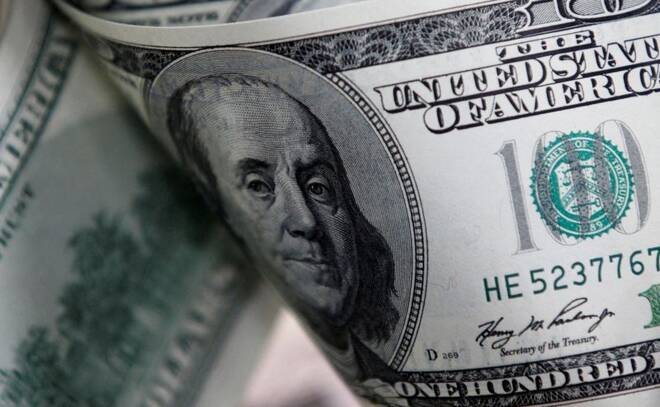Advertisement
Advertisement
Dollar eases against euro as investors weigh rates outlook
By:
By Kevin Buckland TOKYO (Reuters) - The U.S. dollar remained weak on Thursday after sliding against major peers overnight for the first time this week as investors fretted about the potential for recession in the United States.
By John McCrank and Amanda Cooper
NEW YORK (Reuters) -The dollar edged lower on Thursday against the euro as investors weighed the outlook for U.S. Federal Reserve policy against the chances that higher interest rates could lead to a recession.
The Fed, the European Central Bank and the Bank of England are all set to announce interest rate decisions next week as policy makers continue to tap the brakes on economic growth through higher rates to thwart stubbornly high inflation. Traders and investors will be on the watch for any signs that the Fed is getting ready to pause its hikes.
“A lot of the recent weakness in the dollar is because we’re getting close to the end of the tightening cycle and exactly when they pause and how long they pause will determine what the dollar does,” said Ed Moya, senior market analyst at Oanda.
“For now it seems that investors are positioning themselves for a little bit of dollar weakness, but there are still a lot of global risks on the table, so we are not going to see this be a one-way move lower for the dollar,” he said.
The dollar was down 0.37% at $1.05435 against the euro at 9:45 a.m. EST (1545 GMT), and up 0.13% at $1.2228 versus the pound.
The Japanese yen edged up 0.07% to 136.405.
U.S. monthly consumer inflation is also due next week, one day before the Fed’s policy meeting on Dec. 14, and could be pivotal in setting longer-term expectations for monetary policy.
“U.S. CPI is the one data release that seems to really matter for broader dollar direction at the moment and, until we got those central bank meetings and one key monthly U.S. data release, not a great deal is happening,” said RBC currency strategist Adam Cole.
Meanwhile, oil prices have fallen below $80 a barrel for the first time since Russia invaded Ukraine in late February, as concern has mounted about how much a slowing economy will impact global energy demand.
Brent crude futures have dropped to around $78, almost halving from early March’s 14-year high of $139.13. Gasoline prices at the pump in the United States, which in June hit a record $5.016, according to the American Automobile Association, are now at $3.329, down 0.4% on where they were at this point last year.
With energy prices having receded, market-based expectations for inflation have relaxed as well. The 10-year breakeven inflation spread, which subtracts the yield on an inflation-linked Treasury from that on a nominal 10-year note, is at just 2.27%, having peaked above 3% in April.
These two forces, together with diminishing expectations for the Fed to keep raising interest rates at the same aggressive pace, have knocked 6.2% off the value of the dollar so far this quarter.
This has put the greenback on course for its worst quarterly performance since the third quarter of 2010, when it dropped 8.5%, but for its worst fourth-quarter performance since 2004, according to Refinitiv data.
“The price action continues to highlight that market participants are becoming less concerned over upside inflation risks and more concerned over downside risks to global growth,” Lee Hardman, currency strategist at MUFG, said in a note.
The 10-year yield was last up 4 bps at 3.44%, having neared is lowest in almost three months overnight.
Money markets show there is a 91% chance that the policy-setting Federal Open Market Committee will raise rates by half a point next week, and just a 9% chance there will be another 75 basis point increase. Rates are now seen peaking at just below 5% in May.
(Reporting by John McCrank in New York and Amanda Cooper in London; additional reporting by Kevin Buckland in Tokyo; Editing by Simon Cameron-Moore and Kim Coghill, Kirsten Donovan)
About the Author
Reuterscontributor
Reuters, the news and media division of Thomson Reuters, is the world’s largest international multimedia news provider reaching more than one billion people every day. Reuters provides trusted business, financial, national, and international news to professionals via Thomson Reuters desktops, the world's media organizations, and directly to consumers at Reuters.com and via Reuters TV. Learn more about Thomson Reuters products:
Advertisement
